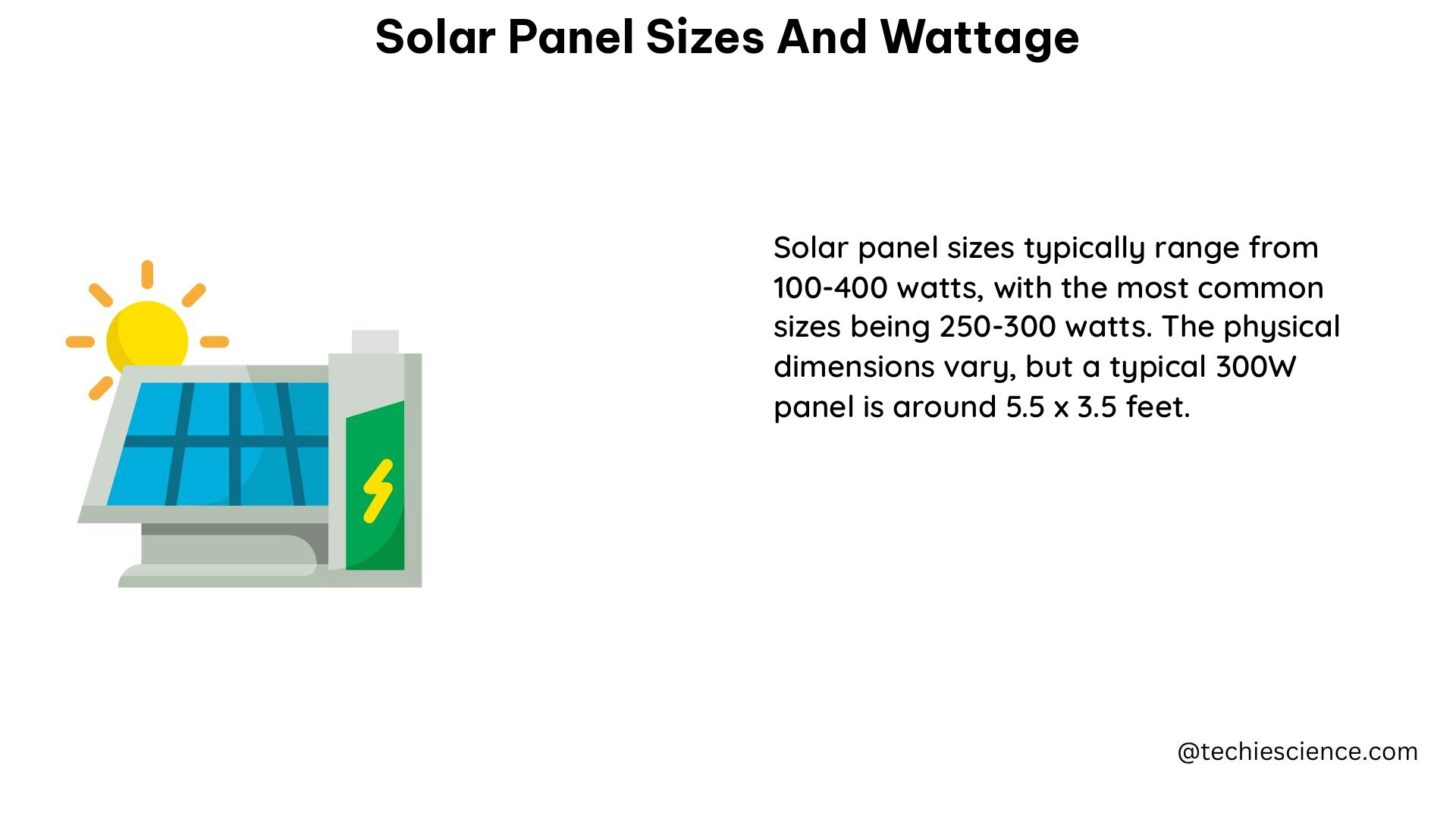Solar panel sizes and wattage are critical factors to consider when designing and installing a solar energy system. The size of a solar panel is often measured in square feet, while its wattage is measured in watts. The wattage of a solar panel indicates its electricity output when tested under ideal laboratory conditions, but the actual solar panel wattage depends on external factors such as sunshine and ambient temperature.
Understanding Solar Panel Wattage
The typical solar panel power rating varies between 40 and 480 watts, with lower-watt solar panels being smaller and more portable. Higher-wattage solar panels exist, but they are often too large for widespread use. Solar panel wattage is calculated by multiplying the solar panel’s voltage, amperage, and the number of cells.
Solar panel wattage ratings usually indicate the maximum energy produced when exposed to direct sunlight at 1000W/square meters. However, factors such as temperature, shade, dust, dirt, weather, orientation, and tilt angle can affect the power output of photovoltaic panels.
Factors Affecting Solar Panel Wattage
- Temperature: Solar panel efficiency decreases as the temperature increases, typically by about 0.5% per degree Celsius above 25°C.
- Shade: Even a small amount of shading on a solar panel can significantly reduce its power output.
- Dust and Dirt: Accumulation of dust and dirt on the solar panel surface can reduce the amount of sunlight reaching the cells, decreasing the power output.
- Weather Conditions: Cloud cover, rain, and snow can all impact the amount of sunlight reaching the solar panels, affecting their power output.
- Orientation and Tilt Angle: The optimal orientation and tilt angle of the solar panels can vary depending on the location and time of year, affecting the power output.
Calculating Solar Panel System Size

To calculate the size of a solar panel system, you need to determine the power consumption rating of each appliance in watt-hours per day, sum up the watt-hours for all appliances to get the total watt-hours you use in a day, and then calculate the number and size of panels needed based on your location’s average sun hours and power consumption.
Formula for Calculating Solar PV Array Size
The formula for calculating the size of the solar PV array is:
Solar PV Array Size (kW) = (Annual Energy Usage (kWh) / Peak Sun-Hours (PSH)) / System Derate Factor
Where:
– Annual Energy Usage (kWh): The owner’s annual energy usage in kilowatt-hours.
– Peak Sun-Hours (PSH): The average number of peak sun-hours per day in the location.
– System Derate Factor: A factor that accounts for losses in the system, typically around 0.77 to 0.85.
This formula is used to determine the average daily solar PV production in kilowatt-hours, which tells us how much energy we will need on a daily basis.
Solar Panel Size and Wattage Considerations
When choosing solar panels for your system, consider the following factors:
- Power Output: Determine the total power output required for your energy needs, taking into account the wattage of each appliance and the number of hours it is used per day.
- Panel Size: Measure the available space on your roof or installation site to determine the maximum size of the solar panels you can accommodate.
- Efficiency: Higher-efficiency solar panels may cost more, but they can produce more power in the same amount of space.
- Budget: Consider your budget and the cost per watt of the solar panels, as well as the overall system installation and maintenance costs.
- Warranty: Look for solar panels with a long warranty, typically 20-25 years, to ensure long-term performance and reliability.
By understanding the technical details of solar panel sizes and wattage, you can make an informed decision and design a solar energy system that meets your power needs and fits your available space and budget.
References:
- Solar Panels Wattage Calculated
- Solar Panel Wattage Output Explained
- Sizing a Residential Solar Electric System

The lambdageeks.com Core SME Team is a group of experienced subject matter experts from diverse scientific and technical fields including Physics, Chemistry, Technology,Electronics & Electrical Engineering, Automotive, Mechanical Engineering. Our team collaborates to create high-quality, well-researched articles on a wide range of science and technology topics for the lambdageeks.com website.
All Our Senior SME are having more than 7 Years of experience in the respective fields . They are either Working Industry Professionals or assocaited With different Universities. Refer Our Authors Page to get to know About our Core SMEs.